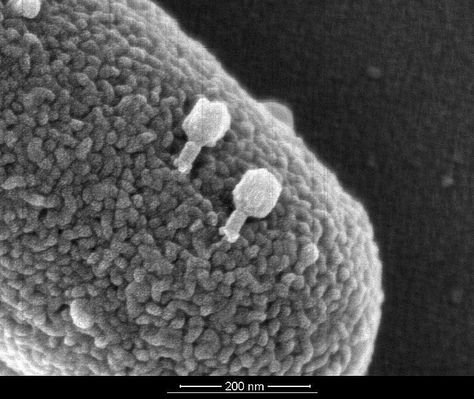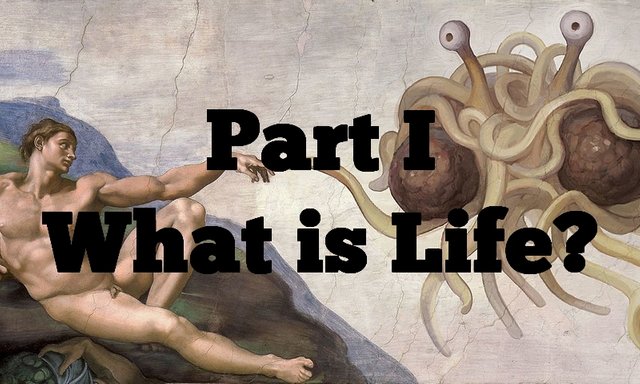(Re-)Create Life in a Lab - Part I
What defines life? This might seem like a silly question for a biologist but answering it is trickier than it seems.
What makes you alive?
The ability to self-sustain and reproduce are frequently cited as key characteristics of living organisms. The first one simply means that living organisms, no matter their size or shape, can maintain a certain degree of organization: trees, bacterial cells, human organs, none of these take random shapes. They are all organized at different scales.
Maintaining order in chaos often means fighting against fundamental forces, which requires energy. In consequence, living creatures need a way to extract energy from their environment, transform it (for example photosynthesis transforms the radiative energy from the sun into chemical energy) and store it. All these processes constitute the metabolism of the organism. A macroscopic example of this ability to maintain order is temperature homeostasis; a process using chemical energy to keep our body temperature constant, thus providing favorable conditions for all the chemical reactions taking place in our cells. When we die this fight against external conditions stops and we return to a state of equilibrium with our environment (in this case room temperature).
/mitosis_telophase-56a09b655f9b58eba4b205cb.jpg)
Deer fibroblasts, fluorescence microscopy / actin (cytoskeleton) is labeled in green, mitochondria in red, and nuclei in blue. Image source
Reproduction is more complicated. Many organisms are able to produce new individuals by themselves when placed in the right conditions: bacteria reproduce through simple cell division, producing daughter cells genetically identical to the mother cells. Other organisms use sexual reproduction which requires another individual of the same species to provide half of the genetic material of the future offspring (you don’t need me to explain this, do you?).
Some organisms, like fungi, can reproduce both sexually and asexually depending on their environment: asexual reproduction is usually quicker and allows the efficient colonization of an environment rich in nutrients for example. However, it creates populations with low genetic diversity, which means that a small change in the environment (the introduction of an antibiotic for example) could kill the whole population. Sexual reproduction is thus usually a better option when colonizing a new biological niche because it increases diversity, opening more opportunities for adaptation.
The problem of viruses
The status of viruses in the tree of life is still a matter of debate. These biological entities are usually composed of a simple genome (which could take multiple forms) encapsulated in a protein capsid and sometimes accompanied by a small set of enzymes necessary to the infection process. They are able to proliferate, but to do so they need to hijack the replication and protein production machinery of a cell to do the job for them.

Viruses (bacteriophages) infecting a bacteria, scanning electron microscopy. Image source
In that sense viruses are considered as obligate intracellular parasites. When isolated from their host, they do not perform any biological process on their own and just float around until they accidentally stumble upon a new cell they can invade. Once inside, the capsid of the virus is usually destroyed (or stays outside the cell), leaving only free genetic material containing all the information needed to produce new viral particles.
The strategies used by viruses take advantage of their “prey” are diverse and sometimes very creative, but in the end they mostly act as passive vectors of genetic information (which does not mean that they do not evolve, but this will be for another article). The status of viruses has however been questioned recently by the discovery of virophages which are a class of viruses infecting other viruses. In my opinion, parasitizing a parasite does not make them closer to being alive but on the contrary more dependent on other biological entities for their own multiplication, but you are free to disagree with me. :)
Living creatures or not, viruses have evolved along with their hosts, are composed of the same molecular parts and actively influenced our own evolution. Numerous regions of the human genome originate from viral DNA that have been inserted and conserved across the generations and without them we would not have some incredibly useful tool like the CRISPR system that I present here. As simple as they are, we still have a lot to learn from them.
As we saw, Life is mainly defined by certain abilities and characteristics, not by its origins or potential future. After all, living organisms are composed of molecules from inanimate matter and inevitably return to this state one day or another. Now that we know that, would it possible to artificially (re-)create life? We will answer this question it the second part of this series.
Sources and further reading:
- An interesting article asking the question of the definition of life even thought I do not totally agree with his seven pillars
- A nice article on virophages
- If you want to learn more on the effect of viruses on the evolution of our genome
- An interesting article on how viruses question our definition of Life

Handy hint: Do NOT power up your posts. You will make a lot more money doing 50/50 payout as long as SBD is higher than $1, and right now it's almost $7. so for 50% of your post income you can be earning 7x more than ifi you power up...
I was not aware of that (i didn't even receive my first payment). I thought that receiving your reward as 50% STEEM / 50% STEEMPOWER and powering-up was the same as receiving the whole reward directly in steempower. Isn't the reward supposed to be the same no matter the currency (since they are all interchangeable anyway) ?
Thanks a lot for the advice !
as an author, you get 75% of the rewards. say your post is standing at 100$ - you get 75$. half of it - 37.5$ - is payed in steem power - this matches the $ price of SP exactly. Half of it, however, is payed in steem dollars (SBD), which are supposed to be at 1 USD. So you get 37.5 SBD. But currently, SBD aren't worth 1 USD, but 7. So you would get much more if you go for the 50/50 split, and just buy Steem from the SBD, atm.
Ok i thought that the price shown was always calculated according to the current value of SBD (so i would just get less SBD when the price is higher), i guess i lost good money on this one . I'll know for the next time :)
Very good article! Good balance between details and simplicity. Good job, can't wait to read more!
nice picture post
Thank you! If you never heard about Pastafarism, here you go :)
https://en.wikipedia.org/wiki/Pastafarianism
@carlgbush Great read, a while back I remember reading about "giant viruses" and how they grew is size from acquiring host DNA and the potential implications this might lead to about the evolution of life.
Definitely a great topic for late night discussions
Stay awesome,
-Dakota
Thanks a lot for your interest Dakota! I agree with you about viruses, i'll probably post more about evolution soon, stay tuned ;)
Nice photo. Thank you for sharing! :) @carlgbush
Glad you liked it :)